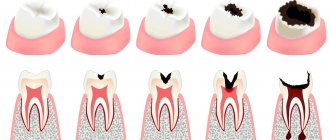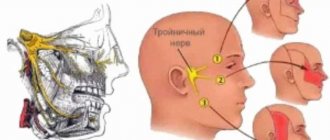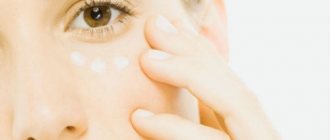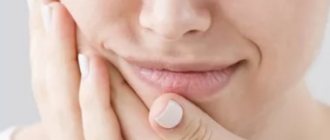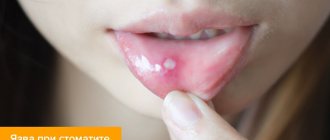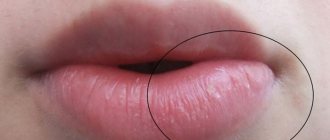For facial injuriesreceived from the blow, in the most vulnerable and tender places are formed bruises and swelling. Such places are the areas around the eyes.
In addition to bruising under the skin, swelling occurs, which in most cases does not pose a threat to vision if the eyes themselves are not damaged.
Such consequences can be eliminated without the intervention of specialists, using medications or traditional medicine methods . We will tell you in detail what to do to eliminate this unpleasant symptom in the shortest possible time, using medical or folk remedies.
Ways to get rid of bruises
Most often, the appearance of a bruise is preceded by a strong blow, which cannot be ignored. This injures small vessels, a small amount of blood flows out of them and permeates the subcutaneous tissue and lower layers of the skin. In response to injury, local swelling occurs - a protective reaction of the body. At this stage, the bruise is not yet visible, but you already need to take active action. The goal is to reduce tissue permeation with blood.
In order to quickly reduce swelling at the site of a bruise, it is necessary to use agents that cause vasospasm. Cooling with ice works well for this, but a frozen piece of meat wrapped in film and a thin towel will also work. It must be applied to the site of injury for 20 minutes. After cooling, the ice is removed, but the procedure can be repeated after 15-20 minutes. Constantly keeping the cold near the bruise is dangerous and can cause even more damage.
Home remedies can help relieve swelling. For this you can use:
- a compress made from a solution of vinegar or vodka;
- onion gruel with salt;
- applying a cut aloe leaf;
- half a raw potato.
Folk remedies against bruises can be used at an early stage, immediately after a bruise. A mixture of garlic and vinegar pulp and lavender essential oil, which should be applied to the injury site, are considered effective. But you need to be careful; minor bruises can be treated at home without the help of a doctor.
What to put on a bruise
In order for treatment for a bruise to be effective, it is necessary to take into account the time that has passed since the injury. The formation of a hematoma goes through several stages. Immediately after the injury, agents are used that relieve swelling. At home, at an early stage, you can use folk remedies, but after that, purchase pharmaceutical drugs.
On the first day, you can apply ointment or gel containing heparin to the bruise. It helps reduce swelling by increasing the speed of blood flow. Heparin is well absorbed through the skin, thins the blood and prevents the formation of a hematoma. Therefore, treatment of the bruise will proceed quickly.
But when using heparin, you need to remember that it is not recommended to use it in the first hour or two after a bruise. It can increase bleeding at the injury site and cause an enlarged hematoma.
If a soft tissue injury is accompanied by pain, it can be reduced with the help of non-steroidal anti-inflammatory drugs. Quickly relieve discomfort with a gel or ointment that contains diclofenac, ibuprofen or piroxicam. They can be applied to the impact site after a few hours.
After a day, these remedies for treating bruises are no longer effective. Blood permeates the tissues, coagulates, and its cells are destroyed. Therefore, the bruise turns blue due to the protein hemoglobin. From this moment, its disintegration and hematoma begins to bloom. She herself will not be able to pass in a short time until all hemoglobin is destroyed into bilirubin.
We need products that resolve bruises by heating the tissues and increasing blood flow in them. You can use dimethyl sulfoxide creams or ointments at home without a doctor's prescription. This substance is obtained from hot peppers, so it has a warming effect. Minor bruises after using it disappear within 2-3 days.
What to do with swelling
If swelling develops, especially if it is chronic, you should immediately consult a doctor. To establish the true cause of fluid accumulation, specialists will definitely prescribe a wide range of studies. As a rule, diagnosis begins with a physical examination of the patient and collection of anamnesis, after which the patient undergoes tests and, if necessary, undergoes instrumental examinations.
• General and biochemical blood tests show the level of red blood cells, hemoglobin, ESR, cholesterol. This is necessary to exclude atherosclerotic vascular lesions and gout. • Blood sugar test to rule out diabetes. • Urinalysis to quantify protein levels. • Hormonal tests. • Ultrasound and electrocardiography to detect heart and vascular diseases.
After general examinations, the doctor can refer the patient to specialized specialists for additional diagnostics if certain pathologies are suspected. For example, if varicose veins are suspected, an ultrasound scan of the veins in the legs may be prescribed. In any case, diagnosis and therapy should be carried out exclusively by a doctor. It is important to eliminate not only swelling, but the underlying disease that caused it. The type (drug or non-drug, surgical, conservative) and intensity of therapy are also selected by a specialist. For example, for heart or kidney disease, certain diuretics are prescribed.
When it comes to varicose veins, the basic drugs are venotonics or phleboprotectors, which correct disturbances in the functioning of the venous circulatory system, strengthen blood vessels and restore venous flow. Special ointments and gels are also used that reduce skin sensitivity and discomfort in areas of swelling. In some cases, wearing compression garments is indicated to relieve symptoms. In the later stages of varicose veins, the problem can only be solved through surgery - for this, phlebectomy, sclerotherapy or EVLO (endovasal laser obliteration) is prescribed. However, in some cases it is possible to get rid of swelling without medication or surgery.
Osteopathy is a system of diagnosis and treatment of diseases of the musculoskeletal system, internal organs and systems without drugs. It is based on the anatomical-functional unity of the body and uses manual methods that restore the body's ability to heal itself.
Changes in the legs can be caused by weakness, overexertion, muscle or joint stiffness. The osteopathic correction scheme depends on the complexity, severity of the pathological process and the root causes that caused it.
In the initial stages of the disease, osteopathic manipulations help avoid the progression of leg disease, preventing the need for drug therapy and surgical intervention on the legs.
Osteopathic medicine views the human body as a single system that constantly adapts to new conditions. When any organ is ill or injured, other systems regulate and compensate for its functioning, which causes pain, swelling or inflammation.
Osteopathic treatment of swelling at the Quality of Life clinic is aimed at normalizing metabolism and digestive processes, which has a beneficial effect on the health of the entire body as a whole. Osteocorrection affects all systems, normalizes their functioning and brings them to a natural state. It allows you to effectively eliminate all negative phenomena, including swelling, shortness of breath, heartburn, disturbances in the gastrointestinal tract and the musculoskeletal system. Osteopathic medicine has no contraindications and can be used by both pregnant women and children.
Our doctors use gentle techniques that relieve tension, normalize blood circulation and lymph flow in the legs, improve vascular tone, provide lymphatic drainage and reduce fluid accumulation. In addition, this impact:
• relaxes muscles and fascia; • reduces or completely eliminates pain; • normalizes metabolism and hormonal levels; • restores anatomical mobility of joints.
Work is also carried out at the level of the diaphragm - thoraco-abdominal and pelvic. This normalizes pressure in the abdominal cavity, restores the functionality of all organs and systems, including blood vessels, which, due to disorders, are forced to work harder. As a result, the entire body is brought into a state of harmonious balance, which has a positive effect on the hormonal and psycho-emotional background. Working with soft tissues normalizes blood and lymph flow. This improves the nutrition of bones and joints, which do not have blood vessels, so the main source of nutrients in them is only the surrounding tissue. Improving bone nutrition eliminates pathological processes faster.
Treatment with lymphatic drainage massage is highly effective. It improves lymph flow, accelerates metabolic processes, relieves swelling and stabilizes the functioning of the central nervous system. This method is combined with other physiotherapeutic procedures - physical therapy, kinesiological taping, compression therapy.
Complex therapy, combining different methods, promotes a speedy recovery by reducing inflammation and swelling of tissues, improving blood circulation at the site of inflammation. As a result, recovery occurs much faster. Preventive courses every six months reduce the likelihood of exacerbations of swelling in the legs. The combination of osteopathy, manual therapy, kinesiotherapy and exercise therapy forms new motor patterns in the legs, stops the progression of diseases, prevents exacerbations and improves the quality of life. The set of physical exercises is selected individually by the attending physician, but even if you do simple movements correctly, they will have results.
How to quickly remove a bruise on your face
A black eye appears much faster than in other parts of the body. If measures are not taken quickly, the resorption of the bruise will take a long time. The reason is the location of the vessels and the loose subcutaneous tissue that surrounds the eyes. It easily becomes saturated with blood and swells.
First aid after injury is to apply ice to the face. Of the folk methods of struggle, it is necessary to use safe ones that will not irritate the mucous membrane of the eyes. Therefore, a paste of onion, vinegar or garlic will not work. But you can use:
- raw potatoes;
- parsley paste;
- a piece of raw pineapple (not canned);
- essential oils.
They are also treated with pharmaceuticals containing heparin, diclofenac and ibuprofen. Bruises on the face can be smeared with gel with troxevasin. It reduces swelling, pain, relieves inflammation, increases capillary tone and reduces their fragility. Troxevasin helps to quickly remove bruises and strengthen small blood vessels. It is recommended to use it 2-3 times a day.
If the bruise is large and does not want to dissolve, you can try to hide it with the help of cosmetics. Women apply a special color corrector to the defect on the face, which covers the blue tint, after which the skin is smoothed with foundation and powdered.
How does swelling develop after alcohol?
Most often, alcoholic edema develops against the background of suppression of the urinary system by alcohol. Due to the effects of ethyl alcohol, the kidneys stop working normally and cannot remove fluid in a timely and complete manner. This is one of the signs of alcohol poisoning. Even short-term exposure of this kind leads to the accumulation of fluid in the soft tissues.
The soft tissues of the face are especially susceptible to such effects. This is why swelling occurs under the eyes and the eyelids swell. Puffiness of the face occurs. With a more severe manifestation, swelling spreads to the limbs.
The resources and capabilities of the liver are not limitless. With a large intake of alcohol into the body or a multi-day binge, the kidneys are blocked by toxins , since the liver cannot cope with alcohol in full. The longer the binge, the more pronounced the swelling. It is especially noticeable with a hangover.
How to quickly remove bruises on legs
First aid for a bruise on the leg is a cold compress. This can be done by soaking a cloth in water mixed with vinegar or alcohol. Due to rapid evaporation from the surface of the skin, they remove the tumor or prevent it from forming.
To avoid having to wait for the hematoma to heal, you need to lie down and raise your leg above the level of your heart. This will speed up the flow of blood from the limb and prevent it from swelling. Ointment with heparin, painkillers and troxevasin also effectively resolve the bruise.
There are hardware methods that help heal bruises. In cosmetology clinics they are treated with a laser. Irradiation of a tumor causes tissue heating and accelerates the breakdown of hemoglobin. You can remove a small hematoma at one time, but a large one will only change color. The disadvantage of this treatment is its high cost.
Recommendations for reducing swelling after plastic surgery
Each type of plastic surgery has its own rehabilitation period. In addition, it is necessary to take into account the individual characteristics of the patient’s body.
- With blepharoplasty, swelling after surgery persists for 10–12 days. In order not to provoke its intensification, you should not wear contact lenses, apply makeup, and it is recommended to sleep on a high pillow.
- Swelling after nose surgery (rhinoplasty) subsides in approximately 2 to 4 weeks. To prevent it from getting worse, the patient should wear a plaster splint constantly for 7-12 days, and then only at night for 4 weeks. It must be remembered that the nose will take on its final shape only 6 months after the operation.
- The same amount of time—about 2 weeks—swelling lasts after VY-plasty (lip augmentation) and bullhorn (upper lip surgery). To undergo rehabilitation without complications, you must follow the recommendations after surgery.
- Swelling after breast replacement surgery lasts about 1 month, because in this case the tissues are more injured and the body “gets used” to the foreign body. It is recommended to undergo a course of rehabilitation procedures, including microcurrent therapy, bioptron, magnetotherapy and homeopathic medicines.
- A facelift is also not easy on the body, so swelling after surgery lasts about 4-6 weeks. Rehabilitation procedures developed by surgeons at the Abrielle Clinic help reduce it.
By using the recovery program, you will go through the rehabilitation period with significantly less discomfort and will always feel calm, because some of the best specialists in St. Petersburg will monitor your health.
Medicines for bruises
Major injuries are accompanied by severe pain, which is difficult to relieve with local remedies. Therefore, soon after injury, you can take painkillers orally based on:
- nimesulide;
- diclofenac;
- indomethacin;
- ibuprofen;
- ketorolac.
They help relieve pain, reduce swelling and inflammation.
Sometimes hematomas appear due to increased fragility of blood vessels, so it is necessary to use agents to strengthen the capillaries against them. Riboxin and complexes containing vitamin C and ascorutin help with this.
It is difficult to remove blueness under the eyes that is not associated with injury. It appears due to kidney pathologies or due to the proximity of blood vessels under the skin. In this case, it is necessary to eliminate the cause, apply cooling compresses before bed or apply special patches.
Pathogenesis of renal edema
The mechanism of formation of renal edema is associated with the following phenomena in nephrological patients:
- massive loss of protein in urine;
- decrease in plasma albumin concentration;
- hyperlimidemia;
- increased movement of fluid from the intravascular space.
Patients have a high ratio of sodium and potassium in the urine, which indicates an imbalance of water and electrolyte balance.
The mechanism for the appearance of such a symptom is still not fully understood, but the characteristic picture indicates to the doctor pyelonephritis, glomerulonephritis. Filtration and excretion of urine are also impaired with kidney cysts, benign or malignant neoplasms.


